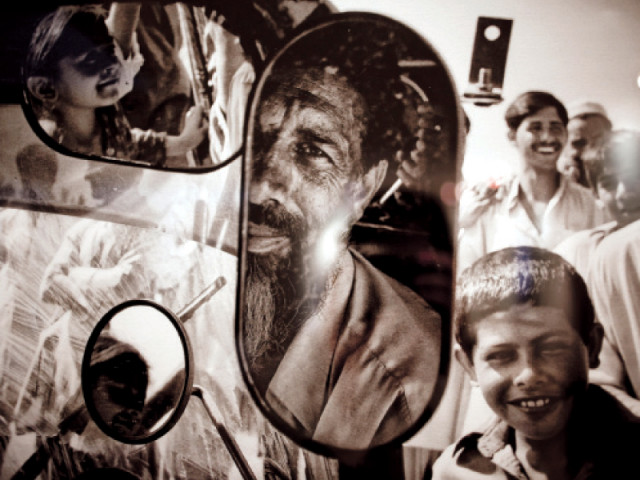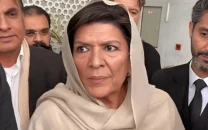A fascinating blend: Around the country in a few candid clicks
Eight photographers showcase their work at Aqs Gallery.

The exhibition presents the work of eight talented photographers from all over the country. PHOTO: EXPRESS
To a foreigner, Pakistan may seem like a kaleidoscope of images. It is a land of majestic mountains and idyllic valleys. But quite often, it is also a place of uncertainty and chaos. This paradox is what drew in Edwin Koo, a Singapore-based photojournalist, to explore Swat in 2008. He was the only foreigner among eight photographers who showcased their work at Aqs Gallery on Thursday.
Titled “Pakistan”, the exhibition encapsulates the essence of the multicultural country called home by all but one of the photographers.

Koo’s “Paradise Lost”, are black and white photographs that depict Swat in its glory and through its downfall. They show men dancing, little girls beaming into the camera lens, a woman with an indecipherable expression through a window and an injured man on a hospital bed. “Despite its beauty and hospitality, Pakistan is the most misunderstood country and I want to give back to its people what I took from it,” said Koo.
His collection forms a part of the trilogy, “A strange place called home” that also features photos of Tibetan exiles and Maoist fighters taken during Koo’s time in Nepal. He is currently working on a book about Swat.
As an artist, Aisha K has a spiritual bend. Her work revolves around temples and shrines and evolved from an independent visual research on mysticism. “As someone who is very westernised otherwise, these places define my roots in a sense. This is my bubble,” she said. Her shots of Bulleh Shah and Baba Farid’s shrines next to a Tharparkar temple pay homage to the region’s rich cultural heritage. The wanderlust filmmaker finds solace in travel and exploring local culture.
Belal Khan refuses to categorise his work. “Instead of specialising in a particular form, I prefer capturing life and scenic views anywhere,” he said. This experimental, fun side is illustrated through an image of a barbeque at Khanpur Dam. However, it is his rooftop overlooking an illuminated city that he fancies the most.

Jamal Shahid is a journalist with an eye for natural beauty. He captured shots of Attabad Lake a few years after it was formed. The electric blue of the lake in the midst of mountains had many people snapping photos in its foreground at the gallery. Sharing a snippet from a trip to Germany, he said, “The locals took us to this hill and they marveled at how it was 1,000-feet-high, I told them you should come to Pakistan,” he said, with a grin. Avaice Haider’s love for the mountains manifests itself in haunting images of Malka Parbat and Babusar Top. Referring to an image of Saiful Malook Lake, he said, “It has become like Murree now. There are shops and pollution everywhere and people throw garbage into the lake. It is disgusting.”
For Waleed Anwar, Pakistan represents hardworking people and monuments. He has photographed a motor mechanic resting at his workshop after a long day’s work in Lahore and a boy fishing during sunset in Rajanpur, among others. His work also includes capturing the historical Wazir Khan Mosque and Hiran Minar. “When a moment passes, it dies. I believe in giving it life by capturing it in a photo,” he said.
Similarly, the photographs by Haider Ali and Muhammad Omer are nuanced with a zest for adventure and love for landscape, aptly highlighted in their respective photo sets. The exhibition will continue till September 13.
Published in The Express Tribune, July 20th, 2013.



















COMMENTS
Comments are moderated and generally will be posted if they are on-topic and not abusive.
For more information, please see our Comments FAQ